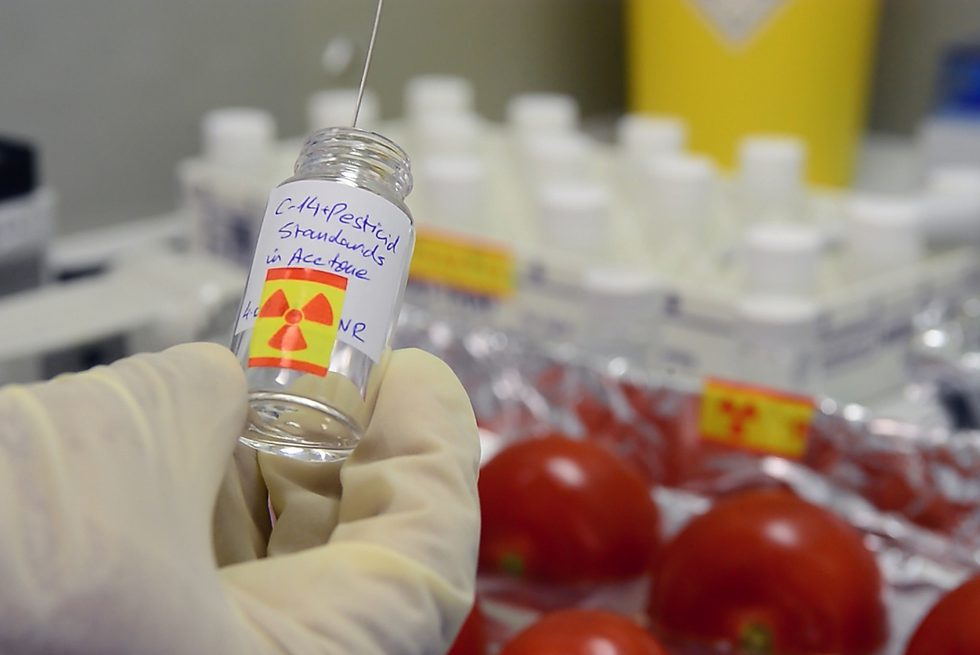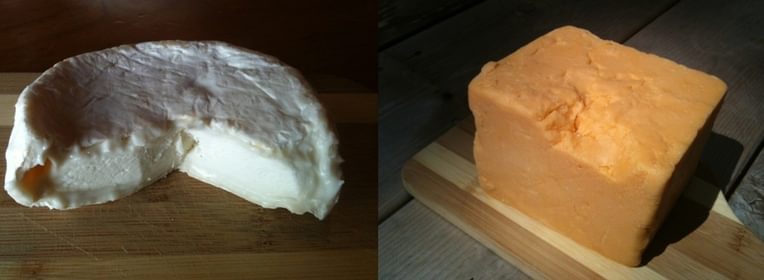Food: Deviation
From the Series: Food
From the Series: Food

Among the cheeses I have in the refrigerator at the moment are these:

What are they? What would you say or ask if I were to offer you a taste?
Julie Guthman’s far-reaching provocation, “What is Food?” — together with Dylan Gordon’s rejoinder that “food is made,” both materially produced and made meaningful as good to eat — reminds us that, for anthropologists, “What is Food?” is fundamentally a classificatory question that interlocks with other social domains: gender/kinship, economy, religion, health and healing.
But we’re talking cheese. These cheeses. Do they tempt you for a taste? On what evidence, experience do you anticipate their edibility and palatability? How do you classify them? Do they look like food for you?
I presume that “food” is both edible and palatable to some eater. Edibility raises questions of allergenicity, pathogenic safety, dietetics (from the ethical to the weight-loss variety), and health-related discomfort. Palatability, equally biocultural, is similarly situated: to me, cilantro tastes like soap and is unpalatable, while my taste in cheese has edged toward snobbish connoisseurship (I can ingest only so much, so why settle for anything less than the excellence I know is out there?). What makes food, then, is a relationship: between a (made) substance that is potentially edible and palatable, and a potential eater.
You know who you are, so shall I tell you about the cheeses?
Here I’m deviating from my own research into the production of American artisanal cheese to contemplate something else: eating it. Rather than make the cheeses meaningful to you as an example of some anthropological insight, let’s instead imagine you’re joining us for supper. Would you like some cheese? As your host, to guide you, I would identify each cheese with reference to a typology. The one on the left I’d characterize as “bloomy-rind” as well as “goat”; the one on the right is “a Cheddar.”
Cheeses are said to come in Families. Here’s a sample list of cheese families, published in Clark Wolf’s American Cheeses:
Pause to note that, as a family taxonomy, the list is a mess. The categories are neither mutually exclusive nor based on equivalent criteria. But let’s keep going.
Some cheese families subdivide into what we could call genus and species:
In identifying the cheese on the left as “bloomy-rind,” I’m speaking to the characteristic fuzz of Penicillium candidum coating the soft-ripened cheeses of which Brie and Camembert are most notable. See how the cheese on the left looks kind of runny just under the bloomy rind? This cheese ripens from the outside; “bloomy-rind” is synonymous with (euphemistic for?) “mold-ripened.”
Why call these type-designations families? As Wolf notes, “You can learn a lot about one [cheese] from knowing another” in the same family. Family — in evolutionary taxonomy as in consanguineal kinship — connotes shared resemblance and implies shared essence. When I confirmed the cheese on the right to be “a Cheddar,” you probably made up your mind about it one way or another. You’ve had (tried, tested, evaluated) “a Cheddar” type before, haven’t you? Now you can better anticipate the proffered taste — and may presume whether you’ll “like” it.
What about the cheese on the left? “Bloomy-rind”… is like Brie; “Goat”… is like chèvre. Cheesemakers and mongers rely on family resemblance to place — and to sell — novel or unfamiliar cheeses. As David Schneider revealed, the symbol of the shared substance of consanguineal kinship — blood — serves also to symbolize the code of conduct — loyalty, love — that Americans like to imagine as following “naturally” from biogenetic connection. Love (cheesemongers presume) should extend to and unite family members: If you like Camembert, you’ll love Shushan Snow — it’s from the same family! (n.b.: the cheese in the photo is not Shushan Snow, made from sheep’s milk by Karen Weinberg in Shushan, New York — but it is in the same “soft-ripened/bloomy-rind” family).
Are you closer to making up your mind about the cheese on the left?
Let’s deviate anew and imagine that a food safety advisor has joined us for dinner. A new typological question comes into focus: are these “pasteurized-milk” or “raw-milk” cheeses? The U.S. Food and Drug Administration regulates cheese safety in terms of this binary distinction (to the FDA, any milk that’s not fully pasteurized is equivalent to “raw”). To be legally saleable in the U.S., a cheese — any cheese, from any family — must be made from pasteurized milk or be aged for 60 days (or both).
Guess what?
The cheese on the left came labeled, “unpasteurized goat milk,” but from the dense freshness, the unripeness, of its interior paste (yes, I’ve tasted it), I assure you, it’s quite underage. Indeed, at the two-stall “farmers’ market” in the rural area where I bought it, the woman who sold me the cheese — the cheesemaker herself — cheerfully informed me that the cheese was aged “two or three” weeks. (She seemed quite unaware of her cheese’s illegal status, even when I gently hinted at it — but that’s for another discussion.)
I’m on vacation. It’s wild in these parts.
Does this new information whet your appetite? Or cause you to lose it? (For the record, if you were pregnant I would withdraw my offer of the cheese on the left owing to risk of Listeria monocytogenes; it’s a “family” matter, having to do with moisture content and low acidity of “bloomy-rind” types.)
How about that Cheddar? Yes, that hunk is cut from a 40-pound block that was cryovaced for aging (it’s a 2 year-old cheese). To ensure consistency and standardization, the milk was pasteurized and re-seeded with laboratory-prepared microbial cultures. It’s perfectly safe (‘though if you have lactase impersistence, or an allergy to cow’s milk, or are vegan…).
Neither Wolf’s family types nor the FDA’s binary opposition can tell you the most important things when it comes to both edibility and palatability:
How clean was the milk used?
How skilled is the cheesemaker?
How hygienic were the conditions of manufacture and aging?
How was the cheese handled after it left the cheesemaking facility?
Some milk is cleaner than others; some cheesemakers are more skilled and hygienic than others — just as eaters are differently constituted in terms of risk and susceptibility. But these meaningful distinctions are not captured by any of our conventional typologies.
“What is Food?” begs both “How is it made (and made meaningful)” and “Who is the eater.”
That generic-looking Cheddar, by the way, was made in a Wisconsin factory owned and operated by a Master Cheesemaker — a skilled artisan who grew up in his family’s cheese factory and (numerous people have told me) can walk into a cheese room and, from smell alone, know “what’s going on in the vat” and what course corrections should be made to the batch.
Both cheeses turn out to be deviant, in their own ways. (And, snob that I am, I’m only eating one of them, beyond that initial, exploratory taste…)
